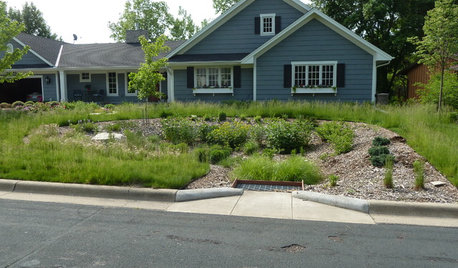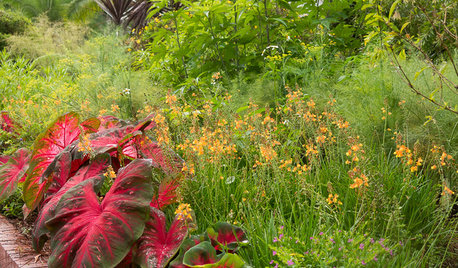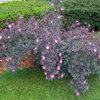Sweltering heat may enhance spread of RRD.(long)
anntn6b
17 years ago
Related Stories

LANDSCAPE DESIGNHow to Design Your Landscape to Spread Water
Water that’s distributed widely will more readily soak into the ground
Full Story
GREEN BUILDINGHouzz Tour: Passive House in Vermont Slashes Heating Bills
Its ecofriendly, low-maintenance design leaves a family with more time to relax and enjoy the weekend home
Full Story
LIFEHow to Prepare for and Live With a Power Outage
When electricity loss puts food, water and heat in jeopardy, don't be in the dark about how to stay as safe and comfortable as possible
Full Story
PLANTING IDEASGreat Garden Combo: Tropical Beauties for a Sun-Drenched Border
These standouts hold up in drought, heat and humidity — and their good looks hold up to scrutiny
Full Story
GREAT HOME PROJECTSHow to Bring Out Your Home’s Character With Trim
New project for a new year: Add moldings and baseboards to enhance architectural style and create visual interest
Full Story
GREAT HOME PROJECTSUpdate Your Windows for Good Looks, Efficiency and a Better View
Great home project: Replace your windows for enhanced style and function. Learn the types, materials and relative costs here
Full Story
LANDSCAPE DESIGN7 Great Trees for Summer Shade and Fall Color
These landscape-pro faves straddle the seasons beautifully. Could one enhance your own yard?
Full Story
KITCHEN DESIGNKitchen Counters: Durable, Easy-Clean Soapstone
Give bacteria the boot and say sayonara to stains with this long-lasting material that's a great choice for kitchen and bath countertops
Full Story
MOST POPULARHow to Get the Closet of Your Dreams
Do you cringe every time you open your closet door? It may be time for a makeover
Full Story
REMODELING GUIDES11 Reasons to Love Wall-to-Wall Carpeting Again
Is it time to kick the hard stuff? Your feet, wallet and downstairs neighbors may be nodding
Full StoryMore Discussions









sammy zone 7 Tulsa
buford
Related Professionals
Waterbury Landscape Contractors · Chelmsford Landscape Contractors · Doctor Phillips Landscape Contractors · Hannibal Landscape Contractors · Lyndhurst Landscape Contractors · Mesa Landscape Contractors · Middletown Landscape Contractors · Vashon Landscape Contractors · West Orange Landscape Contractors · Yuba City Landscape Contractors · North Hollywood Swimming Pool Builders · Seabrook Swimming Pool Builders · Shady Hills Swimming Pool Builders · Stafford Swimming Pool Builders · Overland Park Siding & Exteriorsanntn6bOriginal Author
buford
patricianat
melva
anntn6bOriginal Author
Molineux
anntn6bOriginal Author
zeffyrose
olga_6b
kaye
anntn6bOriginal Author
brother_cadfael
Al Mitchell zone 5b (ameri2nal)
wild_rose_of_texas
georgia_rose
mark_roeder 4B NE Iowa
ogroser
melva
anntn6bOriginal Author
Embothrium
anntn6bOriginal Author
michaelg
carla17
anntn6bOriginal Author
patricianat
bbinpa